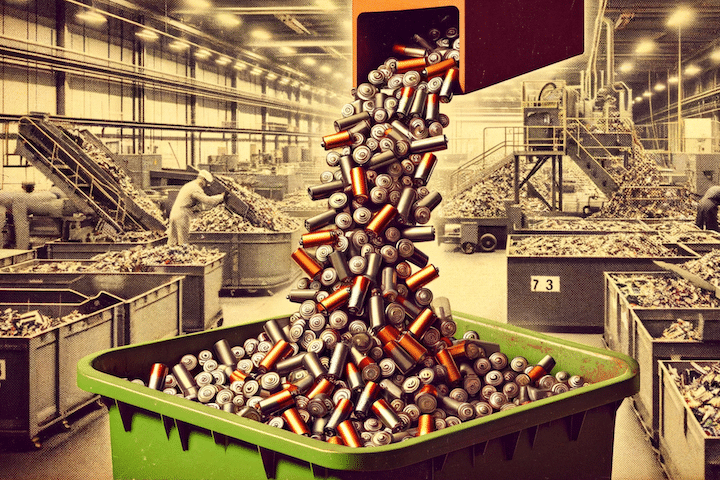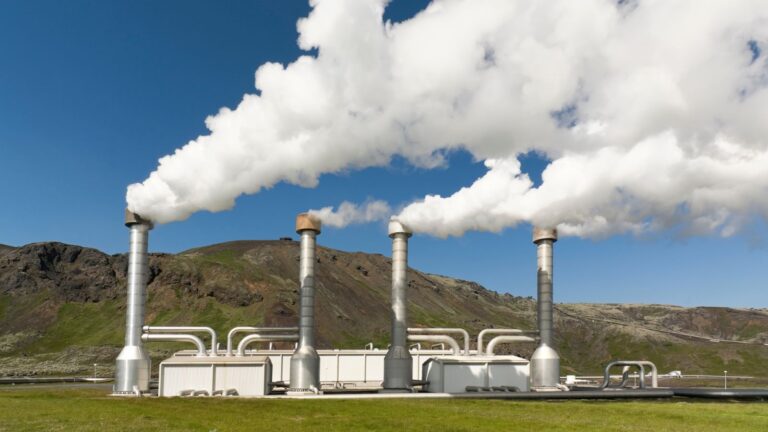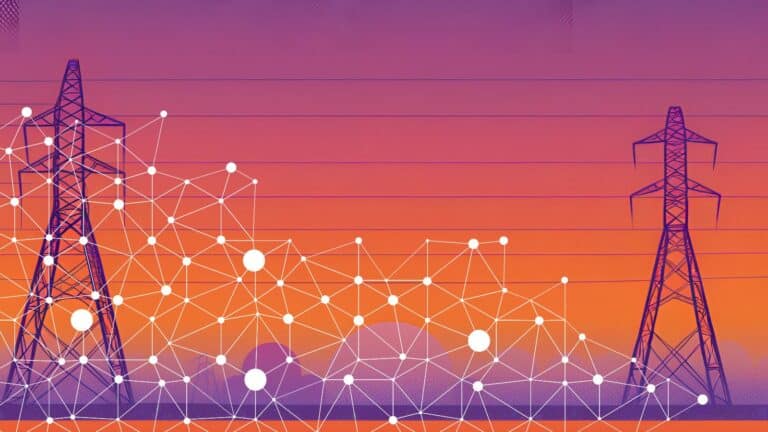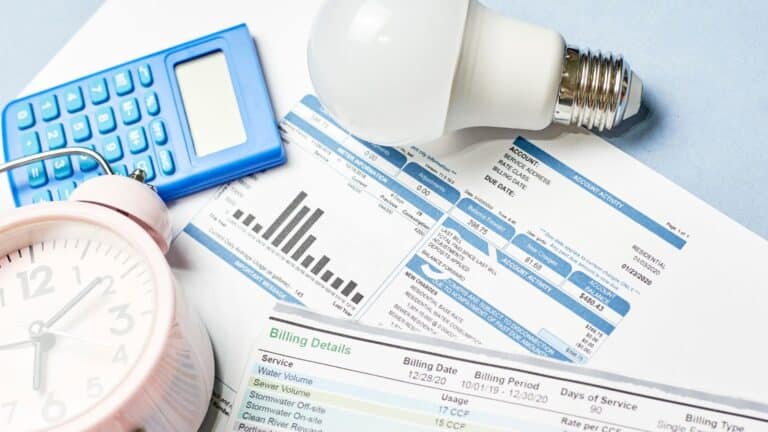Keith Kinch: [00:00:00] The goal was simple How do we work in millions of buildings across this country that are primarily in urban communities and make the buildings healthier and build our stable communities? [00:00:12][12.1]
Melissa Lott: [00:00:15] This is Keith Kinch, the general manager and co-founder of a company called Black Power. [00:00:19][4.4]
Keith Kinch: [00:00:25] We turn buildings into Teslas, we rip out old fossil fuel systems out of existing buildings across this great country with electrifying heating and cooling systems. In doing so, we lower carbon emissions. We make the buildings healthier and make the air quality better. And then we also create jobs locally, doing it. [00:00:42][17.1]
Melissa Lott: [00:00:42] Turning buildings into Teslas. That might sound wacky, but here’s the thing about buildings. They are a massively important piece in the puzzle for getting our economy to net zero. Today, carbon pollution from buildings. And I’m talking about heating, air conditioning, gas stoves, lighting, electricity. It accounts for about 30% of U.S. greenhouse gas emissions, and that’s a huge chunk of our carbon emissions. And decarbonizing buildings. It’s not just good for carbon emissions. Like Keith said, it can be good for so many other things too. I’m talking about good for health by improving air quality. Good for the local economy. By creating jobs and even good for costs. By saving building owners money in the long run. When, when, when. But decarbonizing the world’s millions and millions of buildings. That’s going to be a huge project. And in the next five episodes, we’re going to talk about every type of building from commercial offices and big box stores to residential, single family homes and apartments. This series is about how we can decarbonize all of them. This is the big switch. A show about how to rebuild the energy systems that are all around us. I’m Dr. Melissa Lott and I’m the director of research at Columbia University’s Center on Global Energy Policy. [00:02:00][78.1]
Keith Kinch: [00:02:04] I think a lot of times when we talk about climate change, electrification for many still feels like it’s an idea. It’s a great policy point, but is actually happening right. You and I are talking now, projects are being completed, buildings are being decarbonized. [00:02:16][11.4]
Melissa Lott: [00:02:17] There are about 6 million commercial buildings in the U.S. today. Think about Walmarts and Targets and stadiums. On top of that, there are over 120 million residential units, the majority of which are single family homes. Keith and his co-founder, Donald Baird’s company Black Power, is one of the groups that’s working on decarbonizing buildings at scale. They’ve already completed 1200 decarbonization projects and are now working on even more ambitious goals, like helping the city of Ithaca, New York, become the first in the country to decarbonize every single building by 2030. So this week we sat down with Keith to talk about what it’s actually going to take to get it done. The first question we need to grapple with, what do we actually mean when we say decarbonize a building? For someone who has never heard the phrase decarbonize my home, decarbonize this building, what does it mean to decarbonize a building? And you said I’d turn buildings into Teslas. So tell me more. [00:03:11][54.2]
Keith Kinch: [00:03:11] Well, I would say in the most basic terms is how do we move systems in your building that generates carbon emissions and makes the air quality much worse? The air quality that for most buildings is an exacerbating factor for asthma. You know, particulate matter, you know, we’re sitting here dealing with the pandemic still. And then also lowering the bottom line for the building. So so for decarbonization, that’s how we talk to building owners. So the first thing is, if your building is running on oil or gas, you’re a bad place. That means you’re not only emitting carbon emissions, you’re put putting your tenants residential otherwise in a bad place, air quality based on air quality. And then too, you’re probably spending more money long term. That building is inefficient, the system is inefficient long term. You want to be in a position where you’re electrified, you’re building and you’re using electrically facility for heating and cooling, right? Long term, it’s going to save you money. So decarbonization, as simplistic as it is, this is really around comfort and safety. And then the bottom line for building owners is those three things, decarbonization. First is weatherization. Right? You know, it doesn’t make sense to put in a brand new heating and cooling system and the windows are 25 years old or your lighting is 25 years old. Right. So we’re looking at, you know, you’re building envelopes. So essentially make sure your windows aren’t releasing heat in the winter and releasing cool cooling in the summer time. Right. So you’re getting a maximum in your systems, I think, to, you know, as electrifying and heating and cooling systems. And the third thing is, you know, the ability to do that from a software component. Right? It’s it’s it is a you know, it is in hand. It isn’t, you know, going downstairs and clicking or buying or, you know, putting your hand in the room and saying, is this cold like this? It’s just a data driven system. Those are the key components. [00:05:03][111.2]
Melissa Lott: [00:05:07] So first, you have to make sure that the building is efficient and not leaking a bunch of energy. This means getting good insulation, making sure the windows are properly installed and improving all of the stuff that building nerds like to call a building envelope. You can also make your buildings more efficient by using software that helps you manage how you use energy in the first place. Energy efficiency might sound boring, but it’s actually a big deal. It’s already led to a 17% decrease in emissions from residential buildings since 2005. Second, you electrify things or move to other zero carbon fuels in buildings that rely on fossil fuels like heating and cooling or gas stoves. And then, of course, you have to think about where are the electricity that you’re using comes from. For example, if the power that your house is running on comes from a bunch of coal, it doesn’t matter as much that you’ve replaced your gas stove with an electric one. Part of the solution, there might be projects like rooftop or community solar. So one thing we haven’t gotten to into as much is actually around generating electricity that you might use in your building at your building. In 2016, Yale put together one of the largest solar projects in New York, and I think it was called Solar Rise Brownsville, and it was 200 panels on homes. Can you step us through that piece of decarbonizing buildings? [00:06:19][72.8]
Keith Kinch: [00:06:20] Yeah, that was amazing. That’s one of the one of the best projects I worked on. You know, I don’t know. I were raised in around Brownsville. I was raised in New York to know this guy. And, you know, we know the area well. So the first thing is, you know, historically, Brownsville is one of the, you know, based on census tract, one of the poorest areas in the state, one for the nation. But, you know, through great work, through organizations locally, they’ve built up this home ownership for a lot of low to moderate income folks over the years where now they have legacy. And these homes that they probably bought, you know, in the mid 1990s, early 2000 and now 2016, these buildings, you know, they they’re valuable and they want to hand it off to their children or grandchildren. So that’s the first thing is being able to work in that sector is amazing. But like many things, you know, we had to educate folks on the ground first, you know, getting homeowners to commit to something that, you know, for many low income homeowners, they have never heard of or the idea of solar is very new. So what we did was we put together a community advisory board of key stakeholders in neighborhood. We had some elected officials, we had a pastor, we had some local nonprofits that all had trust and equity in the community. So that was a first step. So I guess that was, you know, you know, being able to complete one project, right, where, you know, we talk about this water like, oh, we worked on 200 homes and it’s amazing. What was the first project? That was key. We worked on one project. It was one gentleman that was Mr. Pritchard. I forget him. He was like, I’ll try this out, see if it works. He’s like, It’s amazing. I love it. And we’re like, Great. And we were excited. Like, we got one done. We had a couple of folks signed up. We’re like, okay, it’s going to be successful. And he spent the last the next year just talking to every homeowner he knew he was, you know, so and people say, Oh, that’s how it worked. It sounds simple. I’ll say, no, we had to you know, it starts with trust and the trust of him and making sure the installations worked and scaling and building it up and being able to see, you know, savings and be able to see the panels on the roof. One thing about solar panels is when I, you know, I could tell you, hey, I’ve got solar panels you can go and see on the roof. I say, Hey, I got a brand new electrified boiler. I’m not going to you’re not going to run down to the basement and look at it. Right? So it’s so the ability to walk down a block and Brownsville and see 50 homes are solar panels. Now, It’s just not an ideal. It’s a great plan. KEITH It’s a great plan. BLOCK pile. I know it’s happening. So with every conversation moving forward, it was like, yeah, I’ve seen some panels on in. Mr. Johnson’s rule. I’ve seen it in Mr. French’s room. This seems to be happening. So in over the summer and over the fall months, we just kept getting people signed up. And it was amazing to the point, you know, we had, you know, key leadership from the state come to Brownsville, and they were like, This is happening here. Like, it’s amazing, you know? And so we were clear with them. This is not just something that can happen in principle. It happened on the ground in one of the poorest sections of New York City, New York state, you know, and jobs were created. Right. It wasn’t just solar installers dug out, you know, folks that were trained to do that. There were solar ambassadors, the marketing teams handing out fliers, you know, talking to the building owners, taking phone calls and creating a call center. So there’s so many other aspects of kind of building out this job, this job pool that we’re able to showcase and is very important and really set the standard on what we know we could do as a company, but also what we knew low to moderate income communities can do across the country, especially New York State. You know, if given the right, you know, the right time, the right mechanisms, the right resources. [00:09:49][208.5]
Melissa Lott: [00:09:51] Okay, great. So we know a bit more now about what it takes to decarbonize one building. But what about millions of buildings? A whole city or a whole town? Last November, Ithaca, New York, announced that it’s going to be the first city in the US that actually decarbonize its entire building stock. They were going to do it in the next decade. And I know the Black Power is playing a key role in that electrification. But I want to dig into what you were just talking about, about how you actually get it done when it comes to a city. Like what does it actually take to decarbonize an entire city? [00:10:22][30.7]
Keith Kinch: [00:10:23] Yeah. The first step is to build out, you know, a community data driven approach to talk to every key stakeholder in the community. You know, when you think about it from a very high level, it’s an entire city, but it’s one building at a time as one relationship at a time. So it’s spending hours upon hours upon point of weeks just having a bunch of one on ones with stakeholders in the neighborhood, whether it’s the the rabbi, the imam, the pastor, whether it’s other building owners. What is key elected officials just getting an understanding on the ground what matters. Right. We understand that the great folks of Ithaca know Ithaca best. So what is the best way to engage and how do we complete projects? And that’s so important that that’s the key. You know, it’s got to be community driven. [00:11:05][42.7]
Melissa Lott: [00:11:06] Can you dive into a little bit around this? You’ve got a community. So let’s say in the case of Ithaca, you’ve got this community that is dedicated to decarbonizing its buildings. What policies and government interventions are helping them to achieve that goal? To achieve the thing they want when it comes to kind of jumpstarting that process, when it comes to getting it done? [00:11:24][17.6]
Keith Kinch: [00:11:24] Well, Ithaca, you know, once again, being a leader, you know, had a very large scale plan plan around decarbonization and across the board that they were working on for a couple of years now. So this is something that they have thought about they’ve worked on to implement. And the key is not just having a policy, but having the right folks on ground to implement it so that, you know, the leadership in Ithaca and the Trinity, Ithaca were very clear. You know, we want to do this. This is how we want to do it. These are the next steps. So working on creating access to data, to buildings is important. Right? And I won’t get into details on data, but having access to building data to know what needs to be done, and then to constantly getting feedback from leadership, not just, you know, elected officials on policy on the ground. You know, how do we do this? How is this important? How do we how do we work locally to make sure we’re creating jobs? How do we work locally to make sure that we’re also educating folks on decarbonization, short term, long term? And then how do we get more involvement with folks that are a little younger, that are either in college or middle school or even younger to say this is important to the community. So this is full by and this isn’t just something that a handful of folks are focused on. [00:12:36][72.1]
Melissa Lott: [00:12:37] When we talk about getting it done. What are the biggest challenges to building decarbonization today and what’s it going to take? If we wanted to retrofit all those millions and millions of buildings around the US? [00:12:49][11.8]
Keith Kinch: [00:12:50] Well, it’s going to take a team effort on a larger scale is going to take all communities, especially lower income communities, in partnership with government utilities to scale this at the highest level. So you’ll need private sector commitment like block power and public sector commitment. That’s one to I think with every project that’s completed, we need to highlight and showcase that, you know, we have a data set conversation with building owners and folks we know building on this trust of the building owners first, right? So, Melissa, you complete a project. I live on the block with you. I’m going to be able to look at your building and hear from you. And we you and I want the same block. We trust each other. I may also go decarbonize my building. Second place people trust like Lowe’s and Home Depot. And what do they have in common? They both spend most their time talking to homeowners and building owners. So we need to be able to build out that level of trust across this country, from building on to building on end to key institutions on the ground. So that’s the key, right, that we we’ve got to go to market and educate folks across this country like it’s happening. It needs to happen. It continues happening. [00:13:54][63.8]
Melissa Lott: [00:13:55] So in all of these projects I have done. What have you seen in terms of these codes, these standards, these building codes? What has helped and what has slowed you down? Like where are the big sticking points and opportunities? [00:14:04][9.5]
Keith Kinch: [00:14:05] Well, you know, we’re fortunate in New York State, You know, our our carbon emission goals and our our goals for 2013, 2050. You know, one of the one of the most progressive across the country, you know, a building clothes, you know, tailor us to do this work, right where there’s existing buildings and new buildings. So that’s one. I do think, you know, as we continue to do this work, we have to go a step further to make sure our building codes continue to be updated, to be more around renewable energy and coming off fossil fuels. You know, where we’re fortunate in New York City that, you know, no new buildings after 2027 no longer use fossil fuels as their main heating system. That’s big. So that means that, you know, the next generation of buildings in New York City are electrified. But those are new buildings or they do more on existing buildings. And I know in New York City now is looking to make a lot of drastic changes on their codes. And we’re excited about that. We’re excited like, hey, we’re all in electrification. We said earlier because I get excited. I know I never thought in my life I get excited about building codes until like the last couple of years and now I get excited because they definitely are catalysts. So the work we’re doing. [00:15:10][64.4]
Melissa Lott: [00:15:15] Remember how we said at the top of the show that doing all of this, it could actually help create jobs. Well, it turns out that building decarbonization introduces a wealth of opportunities for helping to grow an economy. So here’s a question around the job creation thing that you’ve mentioned a couple of times. Can you talk a bit more about how exactly does decarbonizing buildings actually grow jobs or create jobs? [00:15:38][23.3]
Keith Kinch: [00:15:39] Yeah. Well, we think about ripping out an old fossil fuel system, weatherizing a building, putting in new windows and making sure that the software that connects the system connects to your phone, and you can then heat and cool your building. That all requires work from a group of folks. The contractor has to come in and do that work. That’s the job created, jobs created. He or she has to hire locally to do that work. So the ability to actually remove the existing equipment and put in a new equipment, that’s the first step. That’s job creation on the ground. We’ve trained over a thousand people on clean energy tech, and they’ve helped us complete over hundreds of projects across New York City. And that’s an example, once again, the ability to take this work, do it in low income areas, create jobs, and also create a pool for contractors. You know, even before the pandemic, you know, we had a lot of folks are aging out of the industry that are retiring. And, you know, the contracts, the labor force have said, you know, how do we add more people to this industry? How do we diversify? And, you know, there were a lot a lot of great ideas. And the work we’re doing is, once again, the example, you know, working in our neighborhoods, training them our age, back solar installation, EV charging management and saying, hey, these are training, you’re trained now, here’s your career path. And it’s also connecting to some employers that are also looking to hire locally. And once again, you know, we were fortunate to have, you know, hundreds of people receive full time jobs over the last year. And, you know, that’s forever. That’s going to be underneath their belt for ever, you know, to do that work. And, you know, we’re talking now this, you know, hundreds of people doing projects across the city that, you know, pre-pandemic never thought about clean energy. Many folks, you know, still in this pandemic may have lost economic dollars, whether it’s because someone passed away or they lost their own jobs themselves and they’re now looking for maybe a second career, I mean, a first career or maybe, you know, some folks in a program are returning citizens. They spend some time in prison and they’re looking for another chance. And thankfully, a further 30% of our participants are women. And, you know, traditionally, women have not been allowed into this industry. So, you know, how do we make sure we have more women involved, not just on the ground with installs, but also software upgrade ability to do the back end stuff and then also create their own companies. We’re trying to build out a workforce for the next 20, 30 years that go to those neighborhoods. I’m just very fortunate to have a safety net to get to this point. So I think about how can we give back, right, and give the same opportunities and make sure that, you know, I’m doing the best, no doubt on that, doing the best we can to to make sure that, you know, we’re building up this workforce that that looks like those LMI communities where I come from, those neighborhoods, whether you live upstate, you know, live downstate, doesn’t matter. Like you should be able to give back on a positive level to your neighborhoods. [00:18:41][181.8]
Melissa Lott: [00:18:44] I love what you just said, where it seems like that core of people that you’re training, they have different backgrounds and different skill sets are bringing to the table. And it’s this idea of it’s not just the person with, you know, their associates or bachelors in logical engineering or something that can actually be a part of this. There’s a heck of a lot of skill sets that go into getting this done. Let’s recap. If we want to decarbonize our buildings, we have to do four things. First, we have to make our buildings energy efficient and manage how we use energy. Second, we have to electrify our buildings or move to other zero carbon fuels. And third, we have to decarbonize electricity itself. Fourth, we need to bring together lots of people and the local government to make these projects happen at scale. Building by building, Keith is working on bringing comfortable carbon free energy to communities across the country. And for Keith, the work is also personal. [00:19:39][55.1]
Keith Kinch: [00:19:40] I think part of what we do is very personal. Duncan and I grew up in low to moderate income communities, so we understand the barriers in place of being there and living in a set building or being around buildings where the heating and cooling isn’t at its best. So for us, it’s definitely a personal impact to us in the communities we work and remind us of, you know, where I grew. [00:20:01][20.6]
Melissa Lott: [00:20:01] Up and what Keith is doing. This is exactly the work that needs to happen in every city and every community across the country to get our emissions from buildings down to zero. [00:20:10][9.2]
Keith Kinch: [00:20:11] Still to this day, I would say maybe at least like once a month, somehow I drive down those areas and I still like driving. And I tell my kids, like, see those panels? Like daddy helped put those out. You know, when I think about what they’re going to ask me, what actually now, but we’re going to actually ten years from now, 20 years from now, what have I done to make their lives better? I want to say I’ve mitigated climate change in order to make their communities safer. [00:20:34][23.3]
Melissa Lott: [00:20:39] Next up on the big switch, we’re going to talk about decarbonizing residential buildings like houses and apartments. The big switch is produced by Columbia University’s Center on Global Energy Policy in partnership with Post-Script Media. This episode was produced by Alexandria, her and Daniel Waldorf. And Bailey is our editor. Theme music, mixing and scoring by Sean Marquand. And a special thanks to our Columbia team Curson, Smith, Kewley, Liz Smith and Natalie Volk. Our executive editor is Steven Lacy. I’m Dr. Melissa Lott. And this is the big switch and. [00:20:39][0.0]
[1195.5]










